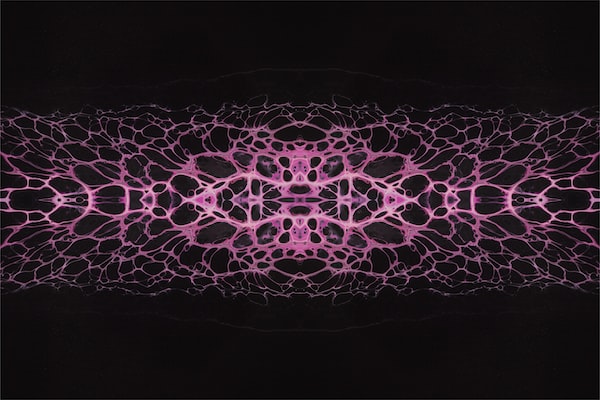Laser cutting is one of the most popular and widely used techniques for producing intricate parts. It has become increasingly popular as it offers high accuracy, reliability, and reduced manufacturing costs due to its speed, precision, and low energy requirements. Laser cutting technology is used in a wide range of industries and applications, from automotives and construction to medical engineering, aerospace, and consumer goods. In this article, we will explore the principles of laser cutting, as well as common techniques and applications of laser cutting for producing intricate parts.
Understanding Intricate Parts
Defining Intricate Parts
Intricate parts refer to components that require more intricate shapes, contours and details than what standard manufacturing can produce. This can include parts that need to be cut to precision sizes and shapes, or have finely-detailed features such as sharp curves, small holes, and intricate patterns. Laser cutting techniques are often used to produce these complex parts, as they provide a more precise and efficient way of creating intricate forms and shapes.
Design Considerations for Intricate Parts
parts Designing intricate parts with a laser cutter offers several advantages over traditional methods such as grinding, milling, and stamping. First, laser cut parts are more precise, allowing for tighter tolerance specifications and smoother surface finishes. Second, intricate parts can be created in less time, leading to faster production and shortened lead times.
Finally, laser cut parts are often more cost effective, as laser cutting requires fewer steps than traditional manufacturing techniques. When designing intricate parts, the designer must consider several factors. The part’s shape and complexity will determine the type of laser cutter best suited for the job.

Laser Cutting Techniques for Intricate Parts
Point-by-Point Cutting
Point-by-point cutting is one of the most precise laser cutting techniques used to create intricate parts. This method utilizes a laser beam that is programmed to move over a material one point at a time. Between each point, the material is cut or removed for a short amount of time then moved to the next point.
This process continues until the finished product is produced.
Multi-Axis Cutting
parts Multi-Axis Cutting is a laser cutting technique that is used to create intricate parts with high accuracy and precise design. This method involves the use of a laser cutter to cut materials into complex shapes and patterns with minimum effort. By combining multiple cuts in the same piece of material, the finished product is intricately designed and precise.
Multi-Axis Cutting allows for different cuts from different directions in a single cut, including angled, curved, and intersecting cuts. The laser cutter can be set to move along two or more axes as it cuts, and this allows for more precise control over the design of the cuts.
Laser Engraving
parts Laser engraving is one of the most popular laser cutting techniques for producing intricate parts. This process uses a laser beam to engrave or etch a pattern directly onto the surface of the material and is an ideal method for creating complex parts with designs that are difficult to achieve with traditional cutting and etching methods. When using laser engraving, the laser beam is directed at the material and the beam rapidly removes small amounts of material to create intricate patterns.
The laser pulsates at high speed, creating a fine line of removal which can be adjusted depending on the material’s thickness and the laser’s output power.

Material Considerations for Producing Intricate Parts
Common Laser-Cutting Materials
Common Laser-Cutting Materials When it comes to laser-cutting parts and intricate shapes, metal is not the only material used. There are many different types of materials that can be used for laser cutting. Some common materials used for laser cutting include wood, paper, acrylic, cardboard, and fabrics.
The type of material used for laser-cutting depends on the end goal for the part. What type of part you’re trying to produce and the intricacy of parts that you’re looking to create. Wood, for instance, can be used for projects that require intricate detail and creating complex shapes.
Paper is best used when trying to create stencils, detailed signs, and other flat pieces.
Appropriate Laser Settings for Different Materials
When it comes to creating intricate parts with a laser cutter, appropriate settings are essential. As each material has different characteristics, it’s important to understand what methods are best for producing parts from it. Laser cutting is an incredibly precise and accurate tool for manufacturing, and can easily create highly detailed parts for a variety of applications.
When cutting intricate parts, the focus should be on the laser settings. Different material properties have an effect on the way the laser reacts when cutting, so laser settings should be adjusted accordingly. When selecting settings for a specific material, it is important to take into account factors such as the material’s thickness, composition, shape and pattern.
How the laser cutter can be used to produce parts of design?
Laser cutting is an often-utilized technique for producing intricate parts of various designs, as the precision it offers can create intricately detailed parts in a fraction of the time of traditional cutting methods. This is achieved by using a focused beam of light which is then guided across the surface of the material in question and heats it up to a point where it vaporizes or melts.

How detailed can a laser cutter be?
One of the most impressive features of laser cutting technology is its ability to produce intricate parts. Laser cutters are capable of creating complex, detailed parts that would be difficult, if not impossible, to produce with traditional cutting methods. The precision of the laser coupled with the ability to control its heat output allows cutters to produce intricate shapes with a high level of accuracy.
With the right laser cutter and technique, intricate parts can be cut with a high level of detail, without producing excess heat or damaging the material from which the parts are being created. Laser cutters can cut shapes that range from relatively simple to extremely complex, allowing for an incredible level of customization and the production of almost any type of elaborate design.

Conclusion
Recap of Laser Cutting and Intricate Parts
In this article, we explored the different laser cutting techniques for creating intricate parts. Laser cutting has become increasingly popular for producing parts with complex shapes and dimensions. The process involves using a high-powered laser to cut or melt materials in order to form intricate shapes.
The primary laser cutting methods discussed here were laser engraving, laser cutting, and laser etching.
Summary of Benefits of Laser Cutting for Intricate Parts
In conclusion, laser cutting is an ideal technique for producing intricate parts. It is a flexible and efficient way to create simple, complex, and highly detailed parts. The superior accuracy and ability to quickly customize materials make laser cutting a popular choice for many industrial, commercial, and even strictly decorative purposes.
The accuracy of laser cutting produces parts with extremely precise dimensions – meaning that the parts can meet tight tolerances, and be combined with other parts very easily. This accuracy is also key for creating complex part designs, as laser beams can be manipulated to follow intricate paths, very quickly and accurately.

